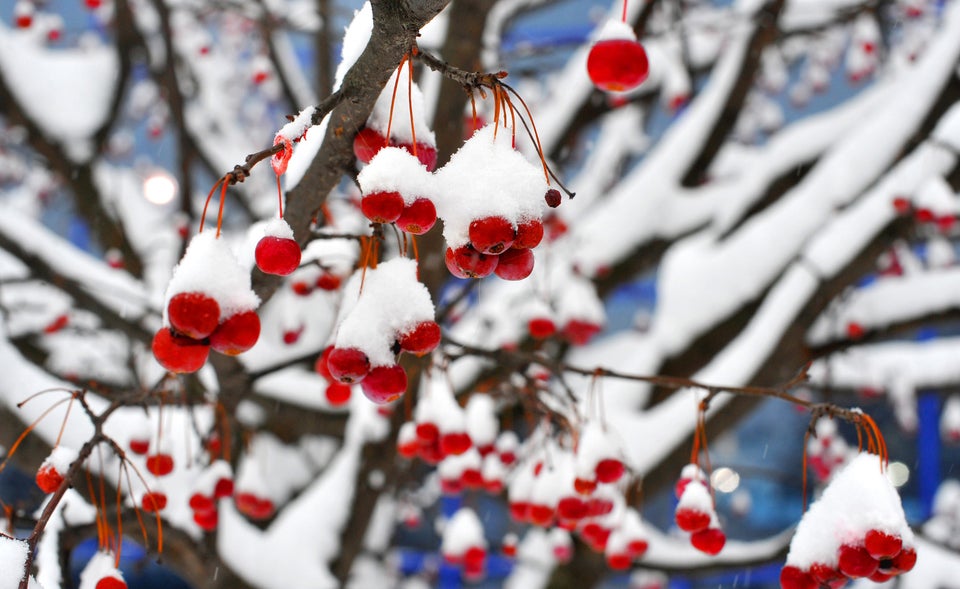1. Peak of Hurricane Season
"All the ingredients necessary for tropical development come together in late August, September and October," AccuWeather Expert Senior Meteorologist Dan Kottlowski said.
Creating the perfect recipe for tropical development, warm water temperatures, favorable upper-level winds and less dry air make late summer and early fall the ideal time for hurricane formation.
"The bulk of these systems will come in September and probably early October, but it looks to me that we're heading into a late season with a storm here and there through November," AccuWeather Lead Long-Range Forecaster Paul Pastelok said.
Throughout the summer, water temperatures continue to rise in the Atlantic Ocean hitting their warmest temperatures and peaking in September. This increase in water temperature coupled with the transition of Africa's spring non-tropical waves to tropical waves in late August become the main driving force behind early fall tropical development in the ocean.
The westerly winds shift more northward in August and September, promoting upper-level winds that are favorable for tropical development. Additionally, unlike the early summer months, the presence of African dust is limited and the air becomes less dry in the late summer.

Workers haul equipment to a house construction site in the Breezy Point community in New York's Queens borough on Wednesday, July 24, 2013. It is the first house to be rebuilt in the beachfront community where more than 110 homes burned to the ground during Superstorm Sandy in October 2012. (AP Photo/Mark Lennihan)
All of these factors combined with the right conditions can create the ideal scenario for a hurricane to form as proven by Superstorm Sandy last October.
"Around this time, we should see a lot more development," Kottlowski said.
However, the main concern for a tropical system this fall is flooding. Multiple areas this summer were slammed with heavy rainfall, but areas hit the hardest, like the Southeast, will have the highest risk for flash flooding if hit by a tropical system.
2. Early-Season Snowstorms
Snow in the fall season brings dangers of its own as many trees are still adorned with their fall colors. Early-season snow is not light and powdery but instead heavy and wet, not only bad for avid skiers and snowboarders but also for power lines.
"With leaves still on trees, snow adds more weight to trees and power lines making them more prone to collapse," AccuWeather Meteorologist Brian Edwards said. This could result in power outages and road closures.

Maple leaves are coverd by snow in Stewartsville, N.J., Saturday Oct. 29, 2011. (AP Photo/Rich Schultz)
Predicted to be the coldest month in the Northeast, November will be the month to be on the lookout for possible snow. According to Pastelok, under the correct conditions, early-season snow could fall in Cincinnati, Cleveland, Pittsburgh and perhaps even from Washington, D.C., to New York City.
Colder weather, which could lead to snow, in late October and November across the central Plains and the Midwest is also predicted by Pastelok.
3. Fog
With the potential to create hazardous driving conditions and travel delays for early morning commutes, fog is third on the list for fall weather's biggest threats.
"Fog is a product of longer, cooler nights and lower overnight lows," Edwards said. Fall is the ideal time for the formation of fog as there are lower nighttime lows, cooler temperatures overall and lower humidity that can more easily meet the dew point.
Fog is can last for multiple hours on end and is usually most dense in the fall months in river valleys.
4. Early Frost
"The biggest threat into the fall for frost is outside cities in the rural areas," Edwards said. Inside most cities the pavement is typically warm, and this can prevent early frost from occurring but out in more rural areas, pavement is not as prevalent.
The Midwest and northern Plains could see an early frost or freeze sometime in September, earlier than usual. Temperatures in these areas are predicted to hit the mid- to low 30s, potentially ending the growing season for soybean and corn farmers and hurting the area's economy.
"An early frost could kill sensitive crops before they have finished the growing cycle," said Edwards.
